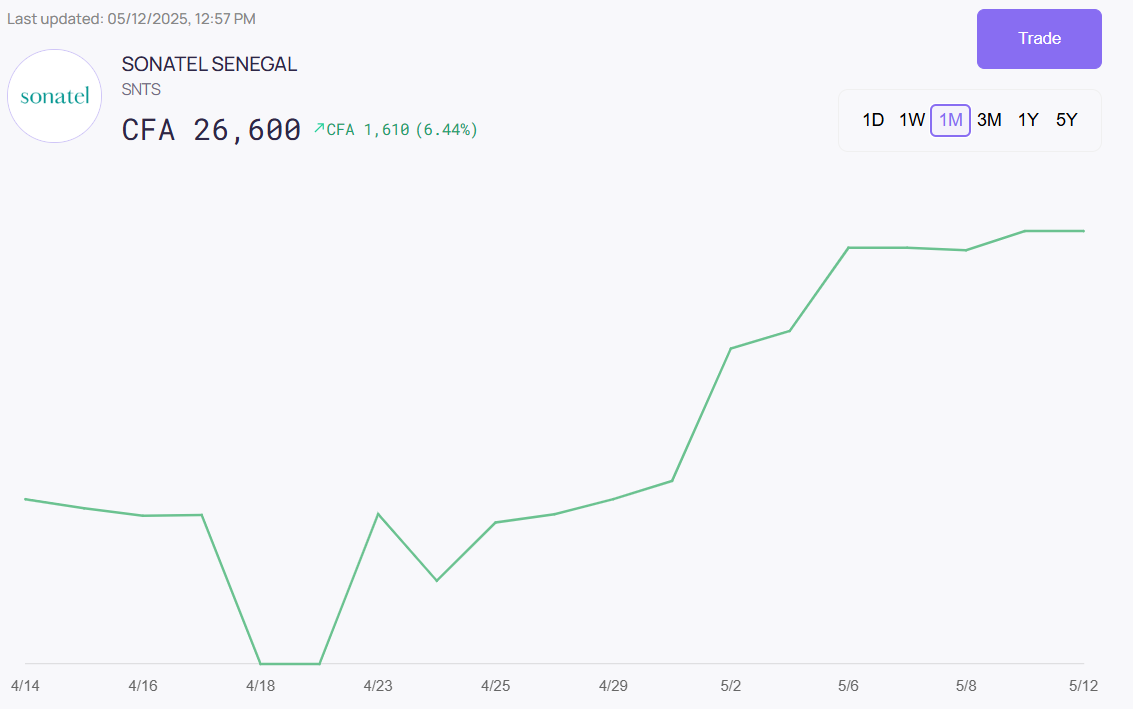What To Do When Your Stock Portfolio Is Suffering a Loss
6 min Read May 10, 2025 at 10:13 PM UTC

“Since I started investing in the BRVM, my stock portfolio has declined by nearly 40%, and it just keeps going down. What should I do?”
If you’re investing in the BRVM (Bourse Régionale des Valeurs Mobilières), you’ve likely asked yourself this question or know someone who has. This is a common and expected outcome with stock investing, as stocks are generally considered high-risk investments because of how volatile their prices can be; they can rise and fall significantly within short periods.
Although high-risk investments like stocks can generate substantial returns quickly, they can also lead to significant losses in equally short timeframes.
A share or stock represents ownership in a company. When you own shares on the BRVM, you own a piece of a West African company, which allows you to share in the company’s profits (through dividends) and capital gains (when you sell your shares at a higher price than you bought them).
But what should you do when your BRVM portfolio is down 40% or experiencing any significant loss? Here are five essential strategies to consider:
What To Do If Your Stocks Keep Going Down
1. Know What You Own — and Why
During market downturns, it’s crucial to revisit your original investment thesis. Why did you purchase SONATEL or SOLIBRA shares in the first place? Was it for their dividend yield, growth potential, or strong fundamentals?
Create a written record documenting the strengths, weaknesses, and purpose of every investment in your portfolio. For example, suppose you invested in Sonatel at 15,000 XOF per share because of its dominance in telecommunications across West Africa and consistent dividend payments. In that case, those fundamentals may still be intact despite price fluctuations.
This documentation serves as your investing roadmap, preventing you from abandoning otherwise solid long-term investments simply because they experienced temporary setbacks. Conversely, it can provide clear-headed reasons to part ways with stocks that no longer meet your criteria.
2. Trust in Diversification
The BRVM, with its 47 listed companies across various sectors including banking, agriculture, telecommunications, and consumer goods, offers opportunities for diversification within the West African market.
When the BRVM-Composite Index declines, your results may vary — potentially for the better — if you’ve distributed your investments across different sectors. For instance, while Sonatel might be underperforming, your Nestle Côte d’Ivoire or Ecobank Transnational Incorporated (ETI) shares might help offset those losses.
Diversification isn’t limited to just the BRVM. Consider allocating portions of your portfolio to different asset classes and investment vehicles.
One powerful diversification strategy is exploring collections like Daba Collections, which offer exposure to carefully curated baskets of investments across multiple industries and countries. These collections can help you spread risk beyond individual stocks, covering sectors such as technology, agriculture, banking, and telecommunications across different West African nations.

Bonds present another crucial diversification tool, offering more stable returns compared to the volatile stock market. Government bonds from UEMOA countries or corporate bonds from established financial institutions can provide a steady income stream and act as a buffer during market downturns.
Daba’s Managed funds also offer an excellent diversification opportunity. Professional fund managers carefully select and rebalance investment portfolios, leveraging their expertise to navigate market complexities. These funds can provide diversification across different sectors, countries, and asset types, reducing your individual investment risk while benefiting from professional investment strategies.
When the BRVM experiences a downturn, these diversified investment approaches—collections, bonds, and managed funds—may provide stability to your overall financial position, helping to mitigate the impact of single-stock or single-sector volatility.
3. Think About Buying the Dip
Market downturns can present buying opportunities. Think of it as purchasing BRVM stocks on sale when prices fall.
For example, buying Sonatel shares when they dipped to 24,000 XOF on April 18, 2025, and selling at the current price of 26,600 XOF would net you an 11% gain.
Many such cases represent a chance to acquire more shares at a discount if you believe in the company’s long-term prospects.

Before buying the dip, ensure you:
- Have an emergency fund covering 3-6 months of expenses
- Have cash available for everyday needs
- Maintain a wishlist of quality BRVM stocks you’d like to own
- Have allocated money for retirement
One effective strategy is dollar-cost averaging—systematically investing fixed amounts at regular intervals. For instance, instead of investing 1,000,000 XOF at once, you might invest 250,000 XOF every quarter, potentially lowering your average purchase price over time.
4. Consider Getting a Second Opinion
Even experienced investors can fall victim to emotional decision-making during market downturns. Consider consulting with a financial advisor familiar with the BRVM market to evaluate your portfolio objectively.
West African financial markets have unique characteristics and challenges compared to other global markets. A knowledgeable advisor can help you understand these nuances and provide perspective on whether your investment strategy remains sound despite temporary setbacks.
With Daba Pro, for instance, you get professional-grade guidance and actionable insights to help you navigate market opportunities with confidence through weekly expert stock picks, in-depth fundamental research, and timely commentary on company results.

5. Focus on the Long Term
When the BRVM declines, watching your portfolio’s value shrink can provoke anxiety and hasty decisions. However, if you’re investing for the long term, patience is often the best approach.
Historical data shows that the BRVM, like other stock markets, has experienced significant volatility but has recovered from previous downturns. For instance, after the 2016 market correction when the BRVM Composite fell over 20%, the market eventually stabilized and recovered in subsequent years.
Remember that selling investments during a downturn locks in your losses. If you had sold SONATEL shares during a previous market bottom at 8,000 XOF, you would have missed the recovery to 14,000 XOF in the following period (hypothetical example).
The Bottom Line
From regional economic challenges to global market pressures, the BRVM reacts to numerous factors. During significant market declines, it’s natural to wonder if you should change your investment strategy.
Ultimately, successful investing in the BRVM comes down to preparation and perspective. By maintaining a diversified portfolio, focusing on long-term goals, understanding what you own, seeking professional advice when needed, and strategically taking advantage of market downturns, you position yourself to weather even the most challenging market conditions.
Remember that market volatility is normal, and what distinguishes successful investors is not their ability to avoid downturns but their response to them. Stay focused on your investment goals, remain disciplined, and view market declines as potential opportunities rather than crises.
This material has been presented for informational and educational purposes only. The views expressed in the articles above are generalized and may not be appropriate for all investors. The information contained in this article should not be construed as, and may not be used in connection with, an offer to sell, or a solicitation of an offer to buy or hold, an interest in any security or investment product. There is no guarantee that past performance will recur or result in a positive outcome. Carefully consider your financial situation, including investment objective, time horizon, risk tolerance, and fees prior to making any investment decisions. No level of diversification or asset allocation can ensure profits or guarantee against losses. Articles do not reflect the views of DABA ADVISORS LLC and do not provide investment advice to Daba’s clients. Daba is not engaged in rendering tax, legal or accounting advice. Please consult a qualified professional for this type of service.

Next Frontier
Stay up to date on major news and events in African markets. Delivered weekly.
Pulse54
UDeep-dives into what’s old and new in Africa’s investment landscape. Delivered twice monthly.
Events
Sign up to stay informed about our regular webinars, product launches, and exhibitions.

